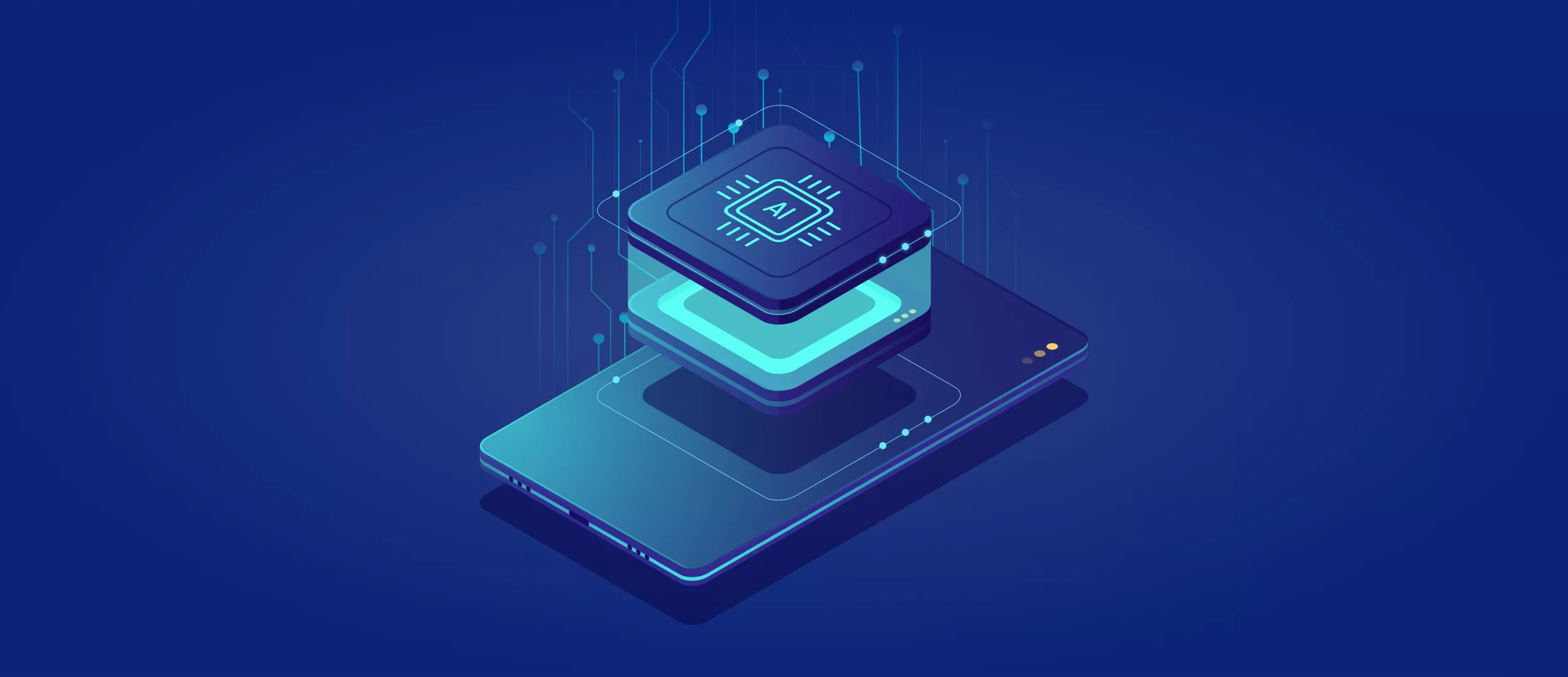Cost to Maintain an App in 2024

Are you running an app or thinking of developing one? Great! But have you considered the cost of maintaining it? You need regular app maintenance to ensure your solution runs smoothly and provides a seamless user experience. But how much does it cost to maintain an app? In this blog post, we'll break down the factors that determine the budget for this. We will provide you with a clear understanding of what to expect.
The Background of App Maintenance Cost
It has been a phenomenal few years for the mobile applications market. Both the Google Play Store and Apple App Store offer more than 4 million solutions. The Google Play Store is forecast to have 143 billion mobile apps downloaded143 billion mobile apps downloaded by 2026. Compared with 2021, it is almost 30 percent more than the 111 billion applications downloaded then.
This growth in the market has led to an increased focus on the development process. This process involves several stages, including:
- discovery and planning;
- Design stage;
- development;
- Testing and QA;
- deployment.
However, once an application is launched, it enters the maintenance phase. It takes constant work to maintain it. Let's find out not only how much does it cost to maintain an application, but why it’s worth it. Maintenance guarantees that the app will always be up-to-date, safe, and functional. It involves monitoring, bug fixes, and content updates. All enhancements are to meet user expectations and adapt to changing requirements.
Regular maintenance allows for spreading the costs of bug fixing over a longer period. This maximizes the return on investment. The most important thing is that it ensures a good user experience. It is estimated that 53% of app users will abandon the software if it freezes, crashes, or takes too long to load. Maintenance helps to optimize performance, streamline user interfaces, and enhance user satisfaction.
Ivanna
Client Manager
7 Reasons to Maintain an App
Here are some key reasons why application maintenance is essential.
Bug Fixes
Maintaining your system regularly will help you identify flaws, glitches, and performance issues. This ensures a smooth and error-free user experience.
Security Updates
The techniques used by hackers and cybercriminals also evolve with technology. Service maintenance includes applying security updates and the necessary patches to protect against potential vulnerabilities. This promotes user trust, protects user data, and stops illegal access.
Compatibility with Operating System Updates
Operating system updates (for iOS or Android) release new features, improvements, and changes. By maintaining an app, you can keep it compatible with the latest versions of operating systems. This compatibility is crucial for delivering a seamless UX. In the end, your program functions correctly on updated devices.
Performance Optimization
Over time, the software’s performance can degrade. The reasons for this include increased data usage, changes in user behavior, or updates to the underlying technology. Regular maintenance allows for performance optimization. It involves identifying and addressing bottlenecks. It is also about optimizing code and improving program speed and responsiveness.
Feature Enhancements and Updates
Users' feedback and market trends can help you add new features, functionality, and improvements. Thus, your business can stay competitive, attract new users, and retain existing ones. Regular updates also prove your commitment to providing a valuable and evolving experience.
Server and Database Management
Many programs rely on servers and databases to store and process user data. Regular maintenance includes monitoring server performance and optimizing database queries. You also need to ensure scalability to accommodate growing user bases. Effective server and database management contribute to app stability and user satisfaction. With it, you can efficiently handle data.
User Support and Engagement
Maintenance involves addressing user inquiries, feedback, and support requests promptly. By providing excellent customer support, you can build a positive reputation. It helps retain loyal users. Tools like Google Analytics can provide valuable and helpful insights. However, they may come with additional costs. Engaging with users also allows you to gather beneficial insights. Thus, you can identify areas for improvement in future updates.
Push notifications are an effective way to inform users about new content or updates. Yet, they need ongoing maintenance to ensure they are delivered accurately.
Types of Mobile App Maintenance
You need to ensure that your program delivers a seamless user experience. At the same time, it should be up-to-date with emerging technologies. For this, let's review the different types of mobile app maintenance.
Corrective Maintenance
This involves addressing and fixing issues that arise in the application. These can be bugs, crashes, or any other unexpected behavior that affects the app's performance. The goal of the corrective type is to identify and rectify these problems promptly. You want to ensure a seamless user experience.
Adaptive Maintenance
This type involves making changes to your app to keep it compatible with evolving technologies, platforms, and OSs. Mobile devices and software frameworks undergo updates and advancements. This is why your program may need adjustments to align with the latest standards. Adaptive maintenance helps to make your solution compatible with new operating systems and user expectations.
Perfective Maintenance
This type of maintenance focuses on enhancing the features and functionality of the software. It involves proactively improving to meet user needs, preferences, and market trends. For this, analyze user feedback, conduct usability testing, and track app performance. Perfective maintenance helps keep your program competitive and relevant.
Preventive Maintenance
This type of maintenance aims to identify and address potential issues before they manifest as problems. It involves regular monitoring, testing, and optimizing the app's performance, security, and stability. This includes routine checks, updates, and optimizations. Thus, you make sure the program remains secure, stable, and efficient.
Emergency Maintenance
You need emergency maintenance (EM) to respond to urgent problems. These issues include severe crashes or security breaches. Think about other situations that disrupt or pose a significant risk to the program. Timely EM helps mitigate the impact of such issues. It ensures the app's availability and safeguards user data.
You can effectively manage and improve your software’s performance by understanding these types.
How Much Does App Maintenance Cost?
Scheduling regular maintenance tasks and bug fixes is essential. It helps prevent potential issues and ensure the app's smooth functioning. It also contributes to the ongoing expenses of maintenance. So, how much does it cost to maintain a mobile app?
These costs vary subject to different factors such as application complexity, user base, and specific requirements. On average, you can expect to spend between $1,500 and $2,500 per month to maintain mobile software effectively. However, it's important to keep in mind that these numbers are estimates. The actual cost may vary depending on your unique circumstances.
Bug Fixes and Updates
Maintaining app performance and user satisfaction requires fixing bugs and releasing updates regularly. The cost of bug fixes can vary depending on the complexity of the problem. The price ranges from $50 for quick fixes up to $2,000 for functional updates. It's important to allocate resources for ongoing maintenance in this area.
Server and Hosting Expenses
If your application relies on server infrastructure, hosting costs must be factored in. This includes expenses for server space, bandwidth, and maintenance. On average, server and hosting expenses can range from $70 to $350 per month. It depends on the complexity and expected growth of your program. Cloud-based services, Amazon Web Services (AWS) for instance, offer cost-effective options where you pay only for the resources you use.
User Feedback and Enhancements
Listening to user feedback and enhancing your app based on their needs is a key part of successful maintenance. Allocating resources for user research, feedback analysis, and implementing changes can range from $500 to $2,000 per month.
Third-Party Services
If your app relies on licensed technology or third-party integrations, there may be ongoing costs associated with their usage. Consider calculating these third-party expenses as part of your maintenance budget.
It is generally advised to set aside 20% of the app's original development cost for maintenance. However, each application is unique and costs may vary.
Do you want to create your own application? - Feel free to contact us!
Are you looking to create your application? Stfalcon is a reputable development company with extensive experience in the field. We have a proven track record of delivering high-quality mobile and web apps to clients worldwide.
Stfalcon specializes in cross-platform mobile app development. It allows your program to run seamlessly across platforms. Our team of developers can create solid iOS and Android solutions with integrated third-party services. We can add real-time synchronization, GPS tracking, and more to your software.
We understand that every business is unique. So, we tailor our development solutions to meet your specific requirements. To explore partnership options or discuss your app development needs, feel free to contact Stfalcon. We are committed to delivering top-notch solutions that drive your business forward.
Now you know the answer to the question of how much does it cost to maintain an application. Let’s explore some frequently asked questions (FAQs) about maintaining an app.
FAQs about the Cost to Maintain an App
What factors affect the monthly cost of app maintenance?
The monthly cost of maintenance is influenced by several factors, including the complexity of the program, the size of the development team, the frequency of updates, the hosting and infrastructure costs, and any third-party services integrated into the software.
What is involved in maintaining and updating an app?
App maintenance involves monitoring server performance, fixing bugs, optimizing program performance, ensuring compatibility with new operating system versions, and addressing security vulnerabilities. Updates may include improving the user experience, adding new features, and addressing user feedback.
How often should apps release new versions/updates?
The frequency of releasing new versions or updates depends on the program and its user base. Generally, apps should release updates regularly to address bugs and improve functionality. A 20–40-day update frequency is ideal. It is important to strike a balance between providing regular updates and avoiding excessive disruption to users.



